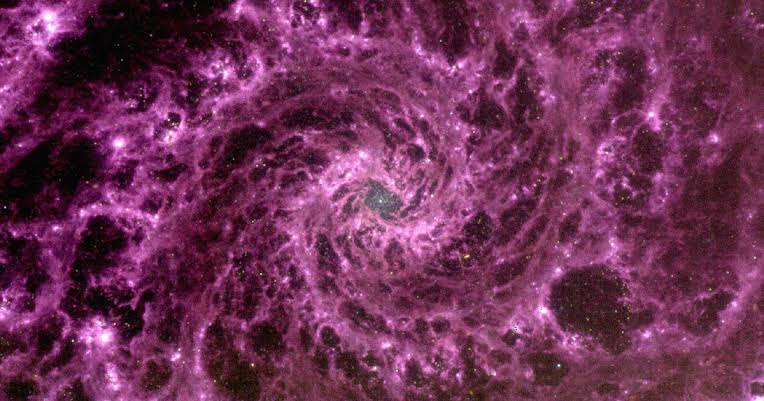The Majestic Purple Spiral Galaxy.
The latest image taken by NASA’s James Webb Space Telescope (JWST) of the spiral galaxy Messier 74 (M74) is truly amazing. JWST is now regularly producing breathtaking images.
Astronomers are giddy with excitement over the image, which was captured by the Mid Infrared Instrument (MIRI) of the space observatory. It depicts the galaxy’s vast spiraling arms in a gorgeous deep purple.
“Just check out what JWST saw yesterday. Oh, my God! “University of Denmark associate professor Gabriel Brammer, who created the image using James Webb data, tweeted.
A FIREHOSE Of Data
The unprecedented space telescope’s scientific operations are just getting started.
Gemini Observatory chief scientist Janice Lee responded to Brammer’s remark by saying, “We are drinking from a firehose. Lee is the creator of the algorithm that generated the data used in Inverse’s analysis to create the stunning image.
M74, also known as NGC 628, is a spiral galaxy that has a flat, rotating disc and a fainter halo of stars surrounding it. It is located approximately 32 million light-years from Earth and is frequently used as a textbook example.
The European Space Agency estimates that spiral galaxies make up about 60% of all known galaxies, including our own Milky Way.
The Views
In case you were wondering, interstellar polycyclic aromatic hydrocarbons (PAHs) make “the filters used for the blue and red channels brighter relative to the green,” as Brammer explained in a follow-up. This is why there is a strange purple cast.
He continued, “I merely stitched the three different photos from the JWST automatic pipeline together.
JWST scientist Mark McCaughrean tweeted, “Your daily reminder that many of the JWST team members are children of the 60s.” “Man, this MIRI mid-infrared tie-dye vision of star formation in the galaxy NGC628 is extremely psychedelic.”
Conclusion
The JWST will enable us to observe these spiral patterns’ centers with an unparalleled level of fidelity; if this image is any indication, the Hubble telescope has spent much of its lifespan examining them.
